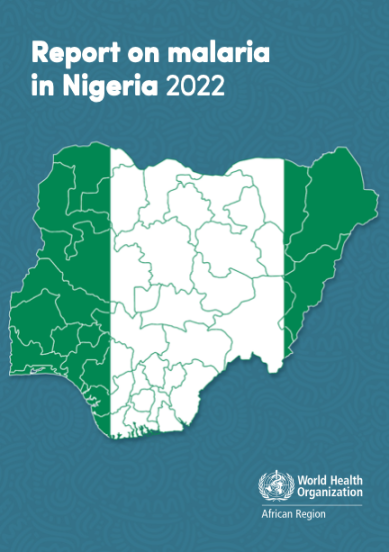
Report on malaria in Nigeria 2022
The Federal Republic of Nigeria is a country in West Africa. It is situated between the Sahel to the north and the Gulf of Guinea to the south in the Atlantic Ocean. It covers an area of 923 769 square kilometres, and with a population of over 225 million, it is the most populous country in Africa. Nigeria borders Niger in the north, Chad in the north-east, Cameroon in the east, and Benin in the west. Nigeria is a Federal Republic comprising 36 States and the Federal Capital Territory, where the capital, Abuja, is located. The largest city in Nigeria is Lagos, the second-largest metropole in Africa.
Malaria is a major public health concern in Nigeria, with an estimated 68 million cases and 194 000 deaths due to the disease in 2021. Nigeria has the highest burden of malaria globally, accounting for nearly 27% of the global malaria burden. The risk of transmission exists throughout the country, all year round. However, the incidence of malaria is highest in the northern and north-eastern parts of the country. As one of the countries supported under High Burden to High Impact (HBHI) approach, Nigeria has been a leader in implementing data-informed strategies to tailor interventions subnationally. The country has also established an integrated national malaria data repository that is accessible at the local government level. A nationwide training exercise on the use of the repository for routine decision making was also implemented.
In May 2022, the country convened its local and external stakeholders for a ‘‘data deep-dive’’ week in Abuja to explore the progress the country has made in the use of strategic information to drive impact against malaria. One of the recommendations from this meeting was a request by the Nigeria National Malaria Elimination Programme (NMEP) to WHO to develop state-level malaria profile reports. With input from the NMEP and its partners, the WHO Global Malaria Programme and the Communicable and Non-Communicable diseases cluster of the WHO African Region have developed this Nigeria report.
The report presents an overview of the malaria situation across all States in Nigeria, focusing on population demographics, malaria interventions, climate and disease burden. For each State, the report presents trends in population, rainfall patterns, intervention coverage and use, malaria prevalence and incidence. Additionally, the number of malaria cases averted over time is presented. The year 2009 was selected as the baseline (or counterfactual in the absence of interventions) for computing cases averted, considering that this was the year the first mass bed net campaign was implemented in Nigeria. A summary section on the key contextual issues in each State is presented at the end of each State’s profile.